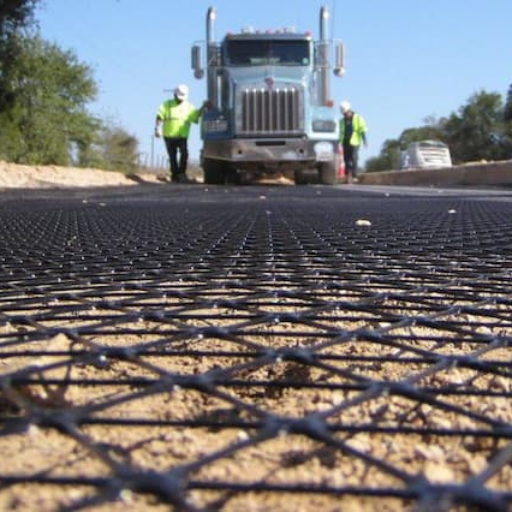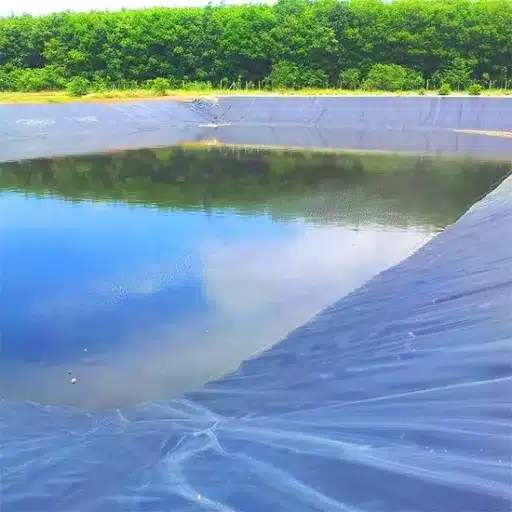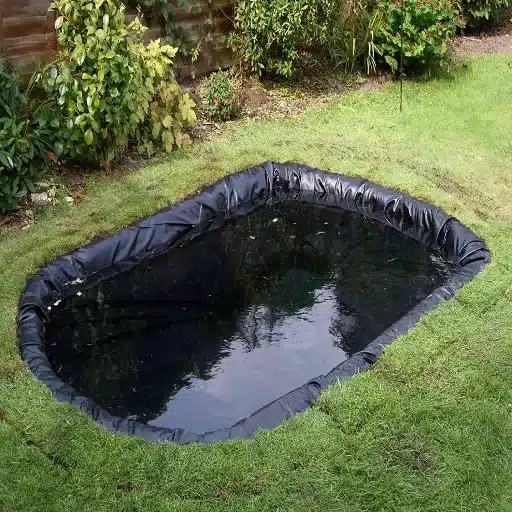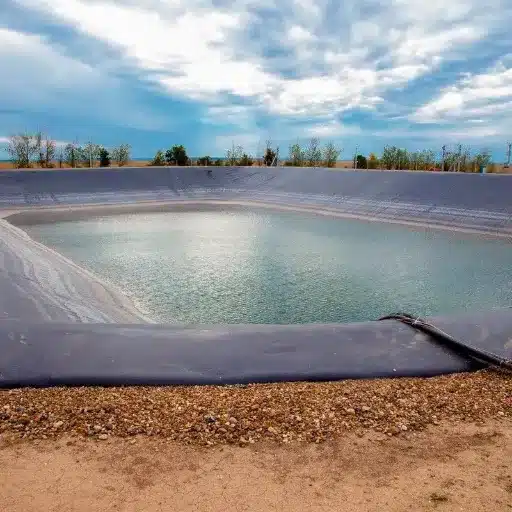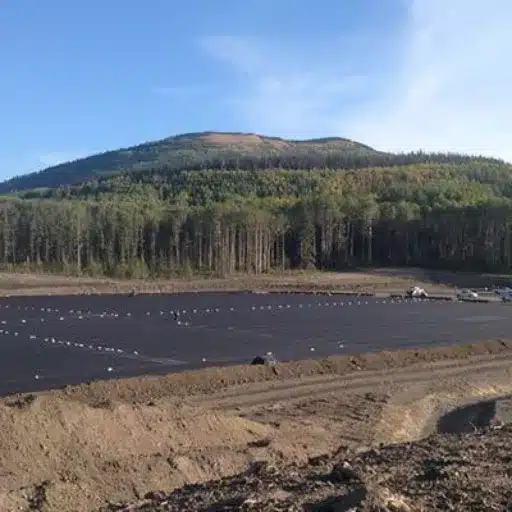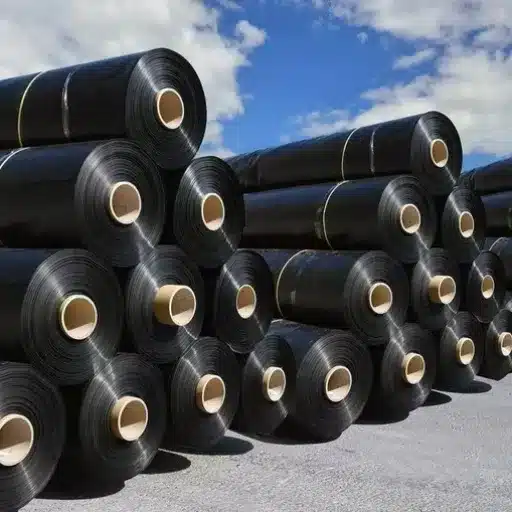Building retaining walls that are sturdy and reliable requires the right materials and engineering methods, and that’s where uniaxial geogrids come into their own. High-performance reinforcement systems have really changed the way retaining walls are constructed—walls now are constructed with the intent of increased stability, longer life spans, and at cheaper costs.
This comprehensive guide sheds light on the mechanism of uniaxial geogrids, their benefits, and why they have become a favorite choice by engineers and contractors. Whether you are a construction professional or just curious about this tech-forward infrastructure application, this article will explore how uniaxial geogrids are reshaping construction methodologies today.
Introduction to Geogrids
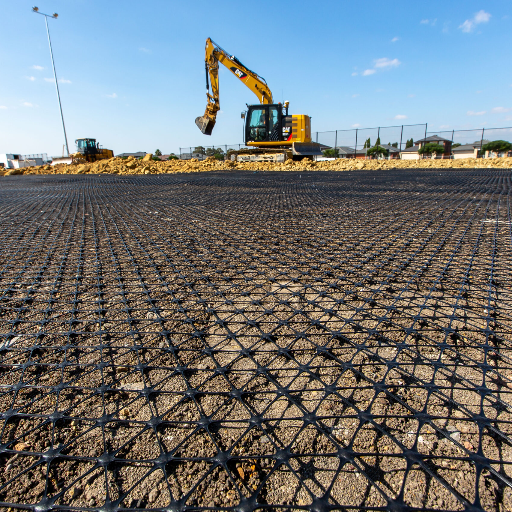
In the case of retaining walls, uniaxial geogrids are a very effective choice in soil reinforcement because of their exceptionally high tensile strength in one direction. They are applications requiring great stability and durability, effectively carrying loads, reducing soil displacement, and increasing durability in any given project.
What are Geogrids?
Geogrids are geosynthetic materials made for soil and other granular material reinforcement. They are usually made from polymeric materials such as:
- Polypropylene – Excellent chemical resistance and durability
- Polyethylene – High flexibility and impact resistance
- Polyester – Superior tensile strength and dimensional stability
These materials are engineered into a grid-like structure with apertures that allow them to interlock with surrounding material. This interlocking mechanism distributes the load to a wider area, thereby enhancing the stability and bearing capacity of the soil.
📊 Market Growth: The global geogrid market is projected to expand at a compound annual growth rate (CAGR) of over 5% between 2023 and 2030, supported by increased infrastructure development.
Applications of Geogrids
Geogrids find applications in various construction works including:
- Soil reinforcement in retaining walls
- Slope stabilization projects
- Foundation support systems
- Road construction and pavement reinforcement
- Railway track stabilization
- Land reclamation projects
💡 Key Advantage: Geogrids can reduce aggregate thickness in pavement construction by as much as 50% while maintaining performance, providing significant cost savings.
Types of Geogrids: Understanding the Differences
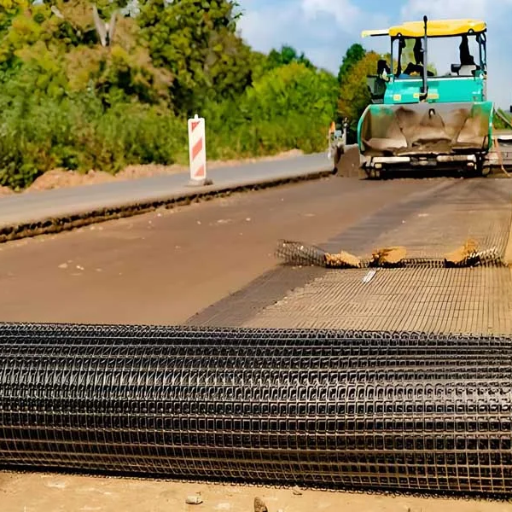
There are three main types of geogrids, classified according to the direction in which reinforcement is provided:
| Geogrid Type | Reinforcement Direction | Typical Tensile Strength | Primary Applications |
|---|---|---|---|
| Uniaxial | One direction only | 20-400+ kN/m | Retaining walls, steep slopes |
| Biaxial | Two directions | 30 kN/m (both directions) | Roadways, pavements, parking lots |
| Triaxial | Multiple directions (radial) | Variable | Heavy pavements, airport runways |
Uniaxial vs. Biaxial Geogrids: Detailed Comparison
Uniaxial Geogrids
- Design Focus: High tensile strength in one direction
- Ideal for: Applications requiring reinforcement along a single axis
- Key Applications:
- Retaining wall reinforcement
- Slope stabilization
- Landfill construction
- Tensile Strength Range: 20 kN/m to well above 400 kN/m
Biaxial Geogrids
- Design Focus: Balanced tensile strength in both longitudinal and transverse directions
- Performance Enhancement: Can improve bearing capacities by more than 50%
- Key Applications:
- Subgrade stabilization in roadways
- Parking lot construction
- Railway foundations
- Benefit: Reduces rutting and deformation over time
Specialized Geogrid Products and Specifications
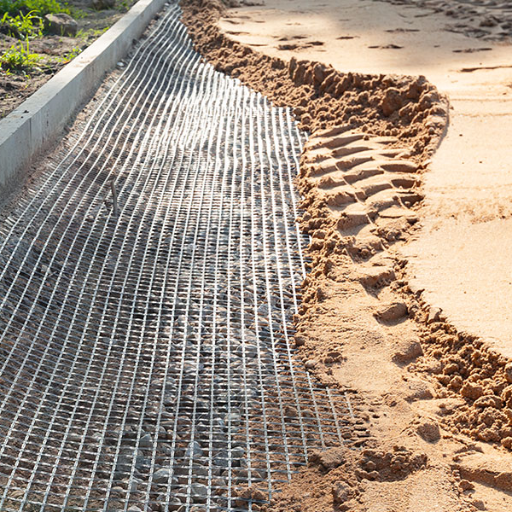
Advanced Geogrid Types
1. Coated Geogrids
Enhanced with protective coatings for increased durability:
- PVC Coating: Provides UV resistance and moisture protection
- Bituminous Coating: Offers chemical resistance for harsh environments
- Benefits: Extended service life and enhanced environmental resistance
2. High-Performance Material Variants
- HDPE (High-Density Polyethylene): Superior chemical resistance
- Polypropylene: Excellent durability and cost-effectiveness
- Polyester: Enhanced tensile strength and dimensional stability
Free-Draining Properties
💧 Drainage Enhancement: Studies show that geogrids combined with suitable base materials can increase water drainage rates by up to 30% compared to non-reinforced structures.
Modern geogrid systems feature:
- Open apertures that facilitate unimpeded water flow
- Reduced water retention within the soil matrix
- Enhanced performance in high-rainfall areas
- Prevention of erosion and instability from excess moisture
Applications in Soil Reinforcement
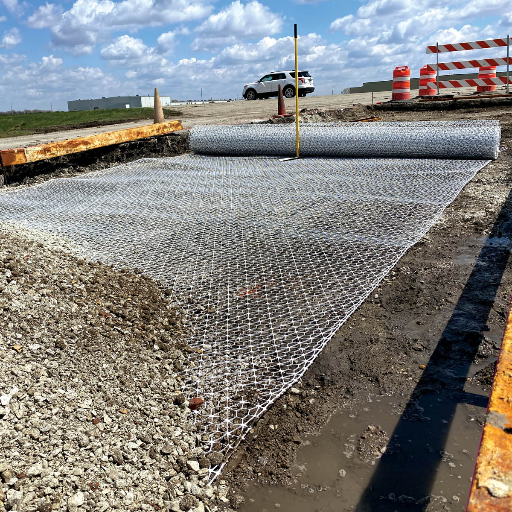
Geogrids for Retaining Walls
Geogrids are essential solutions for enhancing the stability and durability of retaining walls, particularly on challenging terrain. These geosynthetic materials work by:
- Increasing tensile strength of the soil matrix
- Allowing steeper wall designs with less material usage
- Creating composite reinforcement with fill materials
- Resisting gravitational and lateral forces effectively
🏗️ Performance Benefits:
- 50% increase in load-bearing capacity
- 30% reduction in wall deformations under load
- 15-25% cost savings over conventional fills
- Enhanced structural reliability for critical applications
Mechanically Stabilized Earth (MSE) Walls
Geogrids enable the construction of MSE walls that offer several advantages:
| Feature | Traditional Walls | MSE Walls with Geogrids |
|---|---|---|
| Construction Cost | Higher material costs | 15-25% cost reduction |
| Durability | Limited by concrete aging | Enhanced long-term stability |
| Fill Material | Requires processed materials | Can use local, minimally processed fill |
| Design Flexibility | Limited height and angle | Steeper angles, greater heights possible |
Industry Applications Beyond Construction
Road Construction and Pavement Stabilization
- Load Distribution: Better distribution across roadbase
- Longevity: 50% increase in pavement life according to field studies
- Maintenance: Reduced maintenance costs and repair interruptions
Landfill Applications
- Foundation Reinforcement: Strengthens landfill cell foundations
- Lining System Support: Maintains integrity under waste loads
- Environmental Protection: 20-30% improvement in containment efficiency
Airport Runway Construction
- Subgrade Strengthening: Handles repetitive aircraft loading
- Deformation Prevention: Reduces risk of structural failure
- Long-term Stability: Maintains runway integrity over time
Green Roof Systems
- Soil Layer Support: Provides stable base for vegetation
- Drainage Enhancement: Improves water management
- Sustainability: Contributes to green building practices
Future Trends in Geogrid Technology
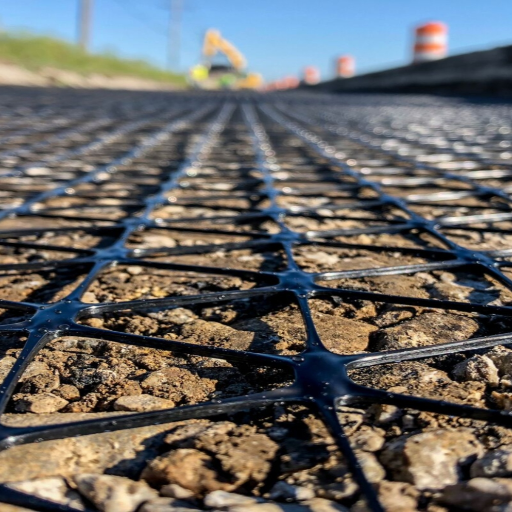
📈 Market Projection: The global geogrid market is expected to grow from USD 1.4 billion in 2023 to over USD 2.2 billion by 2030, representing a CAGR of 6.8%.
Emerging Technologies
Smart Geogrids with Embedded Sensors
- Real-time Monitoring: Track strain levels and soil movement
- Enhanced Safety: Early warning systems for structural issues
- Improved Efficiency: Data-driven maintenance and optimization
Advanced Material Development
- High-Performance Polymers:
- Polyvinyl alcohol (PVA) for enhanced strength
- Aramid fibers for extreme durability
- Environmental Solutions:
- Biodegradable geogrids for temporary applications
- Fully recyclable options for sustainability
- Natural-fiber-based alternatives
Renewable Energy Applications
Expanding applications in renewable energy infrastructure:
- Solar Power Fields: Slope stabilization and foundation support
- Wind Farms: Enhanced foundation stability
- Environmental Benefits: Minimal environmental footprint
Challenges and Solutions

Current Industry Challenges
| Challenge | Impact | Proposed Solutions |
|---|---|---|
| Variable Raw Material Prices | Production cost volatility | Alternative materials, recycled polymers |
| Awareness Gap in Emerging Markets | Limited adoption in developing regions | Education programs, government partnerships |
| Extreme Environmental Conditions | Durability concerns in harsh climates | Advanced coatings, UV-resistant additives |
🎯 Market Opportunity: Awareness programs could increase geogrid demand in Asia-Pacific by 15% within five years, according to Allied Market Research.
Research and Development Investment
Industry R&D spending is forecasted to rise at 8% per annum through 2030, focusing on:
- Advanced coating technologies
- UV-resistant material formulations
- Sustainable manufacturing processes
- Smart monitoring integration
Reference Sources
- Markets and Markets
- Title: “Geogrid Market by Type, Application & by Geography – 2022”
- Description: This source provides insights into the geogrid market, including its applications, target audience, and market trends. It is a reliable resource for understanding the feasibility and demand for geogrids in various industries.
- Link: Markets and Markets
- Localogy
- Title: “Geo-Grid Rank Tracking, the Competitive Edge Multi-Location Businesses Need”
- Description: This article discusses the use of geo-grid rank tracking for businesses, emphasizing its importance in local SEO and market visibility. It highlights the practical applications and benefits of geo-grid strategies.
- Link: Localogy
- Creative Client Booster
- Title: “Local SEO Success with Geogrid Keyword Ranking & Optimization”
- Description: This source explains how geo-grid keyword ranking can help businesses optimize their local SEO efforts. It provides practical examples and strategies for leveraging geo-grid technology.
- Link: Creative Client Booster
Frequently Asked Questions (FAQs)
Geogrids are geosynthetic reinforcement materials composed of a grid-like structure made from high tensile materials. In soil reinforcement, they transfer stresses efficiently and assist in equal distribution of load weight. Applications include retaining walls, slopes, and road base stabilizations.
Proper installation is crucial for long-term performance. When correctly installed, geogrids maintain structural stability by preventing shifting of base materials and increasing junction strength, providing a stronger foundation able to withstand heavy loads.
Biaxial geogrids offer high lateral load resistance and work well in soft soil applications to help distribute loads and prevent movements. Their rib arrangement contributes to junction strength and aids in retaining walls and slope reinforcements.
Available products include geogrids, geotextiles, and other geosynthetics designed to improve the bearing ability of soft soils, increase road lifespan, relieve settlement issues, and provide proper stress transfer.
Geogrids distribute loads over wider areas through their aperture design and weave structure, reducing settlement and deformation possibilities. They engage well with surrounding soil to ensure long-term stability.

